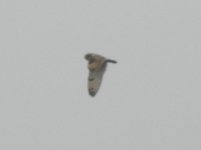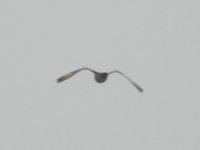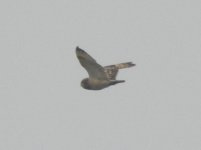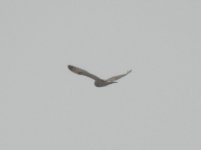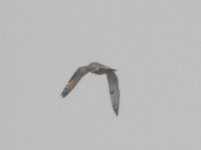PhilSteiner
Well-known member

I took these photos this morning in Dushanbe, Tajikistan. The owl was flying away northward, not foraging over the sewage treatment impoundments where I was birding. My initial impression from its floppy flight was Short-eared Owl, which should pass through on migration even though there are no observations in Tajikistan on any database catalogued by gbif.org. However I want to be sure we can safely eliminate Long-eared, especially since I've never seen Long-eared in flight. Comparing to photos in the Macaulay Library, it seems unstreaked enough on the belly and underwings to eliminate LEOW, and other possible species (Ural, Tawny, Eurasian Eagle-Owl) seem to be eliminated based on wrist and wingtip markings. Its flying during the day also seems to point to SEOW. I'd appreciate any feedback!




